Habsburg Castle
About Museum Aargau
Hauptmenü

The Eigenamt, the territory between the Kestenberg hill and the rivers Aare and Reuss, was part of the early possessions of the Habsburg.
On the Wülpelsberg hill, Radbot and his brother-in-law Bishop Werner von Strassburg built the Habsburg Castle around 1020/1030.
Radbot's grandson Otto II was the first member of the family to use the title Count of Habsburg holding the countship of Upper Alsace.
His descendants lived in their ancestral castle until around 1230.
After 1230, Habsburg Castle did not suit the ambitious comital family as a residence anymore and was invested as fiefs to low nobility ministerialis.
Thus the stewards of Habsburg-Wildegg resided in the rear castle, and the front castle was given to the Lords of Wülpelsberg and later on to the knights of Wolen. In 1371 Henman of Wolen united the two castle fiefs.
With the invasion of the Confederates in 1415 the Habsburg lost their ancestral castle, it was taken by the Bernese without a struggle.
Henman of Wolen had to acknowledge the sovereignty of Berne and, impoverished, bequeathed in 1419 Habsburg Castle to his nephew Peter of Greifensee. Peter sold it in 1457 to the Bernese, who in turn disposed it to Anton Segesser in 1462. By 1469 the castle ended up in the property of the Convent of Königsfelden.
After the secularisation of monasteries in the course of the Reformation, Habsburg Castle fell into the hands of Berne again and was administrated by its Stewards in Königsfelden.
Already decayed to two-thirds, the castle was only occasionally occupied by a guardian.
In 1804, Canton Argovia took ownership of Habsburg Castle. Several phases of renovation of the well-preserved rear castle succeeded.
The ruins of the rear castle were excavated and conserved between 1978 and 1983. Since 2009 Habsburg Castle is part of Museum Aargau.
The first castle largely consisted of timber constructions.
The only masoned edifice was the partly representative, partly fortified residential building, a multi-storey stone house.
In the last third of the 11th century the extension to a double castle took place.
The front castle was completed with the east and north towers. The oldest still existing edifice of the rear castle is the small tower dating from the late 11th or early 12th century. During the 12th century a two-storey chapel was erected in the courtyard.
From 1200 on the rear castle was extended by the large tower and a curtain wall with a flanking tower at the northern hillside.
With the residential building and its inner courtyard the rear castle as it exists still today was completed around 1230.
When the front castle was abandoned around 1220/30 and began to decay, the rear castle's ability of defence towards east was weakened.
Therefor the trench, dug in the courtyard in the 14th or 15th century, was supposed to hinder the approach to the remaining rear castle.
After almost 300 years without noteworthy construction activities, the Bernese started restoration works in the rear castle in the 16th century.
The residential building and the inner courtyard were altered and extended several times. Around 1600 the well was given up. In the 17th century the castle chapel and the ruins of the front castle were torn.
From 1866 on Canton Argovia undertook several renovations of the castle, by then neglected for decades again.
From 1866 on Canton Argovia undertook several renovations of the castle, by then neglected for decades again. Today's completion of the interior of the rear castles residential building and inner courtyard date from this period.
After further renovation works at rear castle the ruins of the front castle were excavated and conserved from 1978 to 1983.
Special examinations of the courtyard took place in 1994/95.